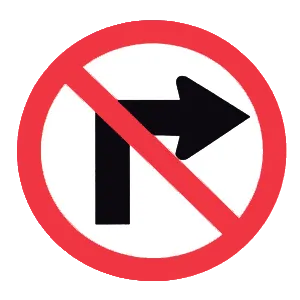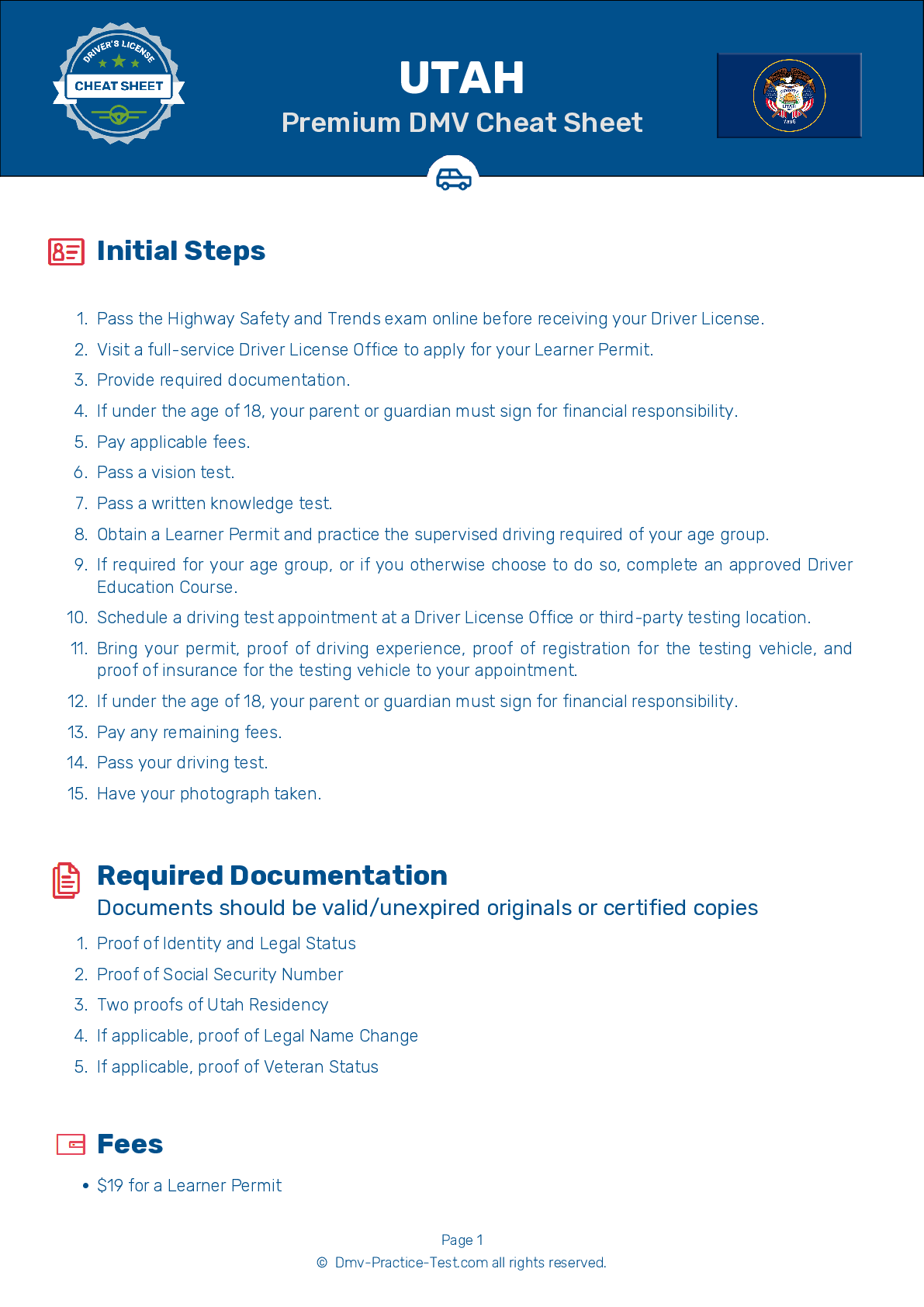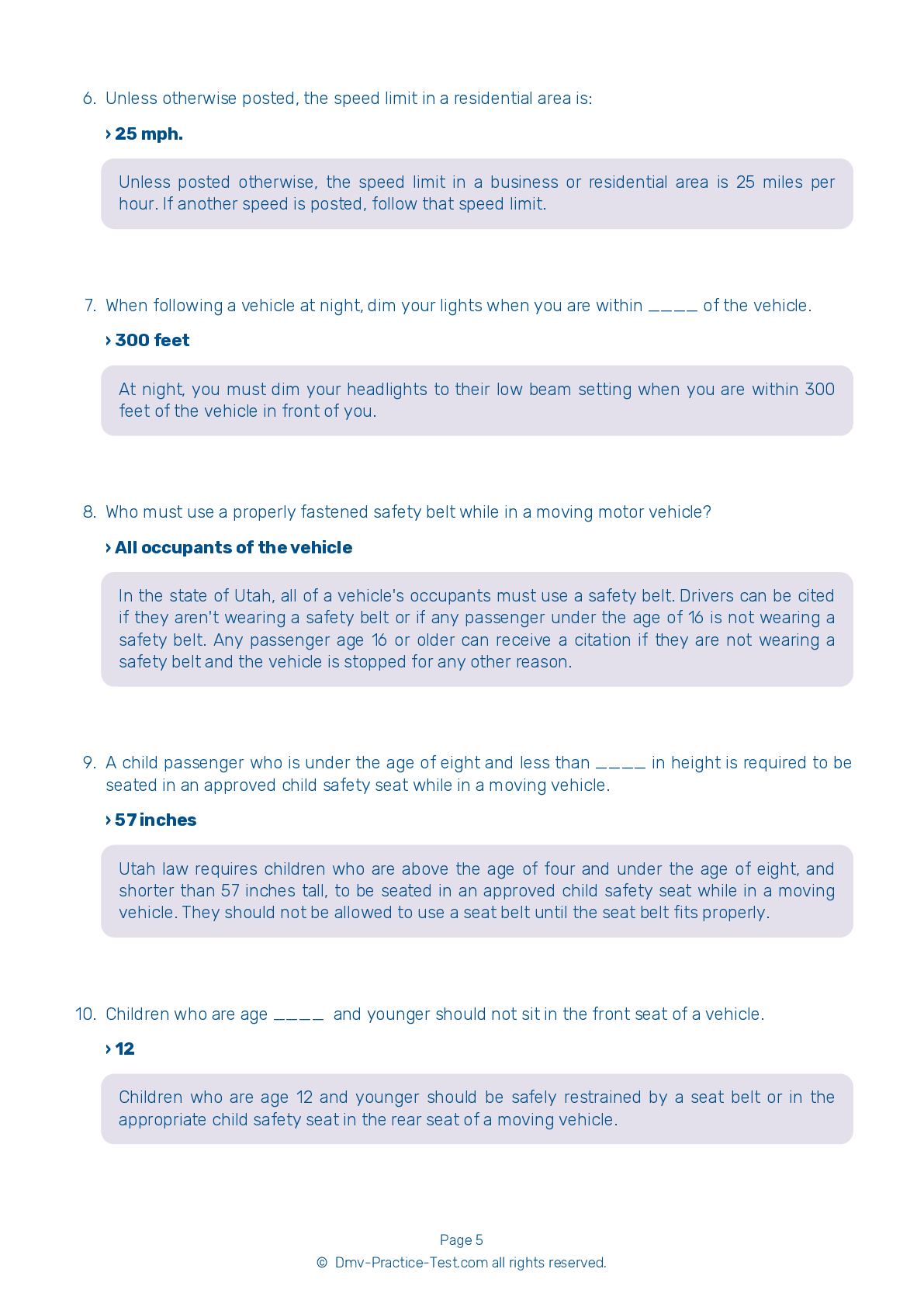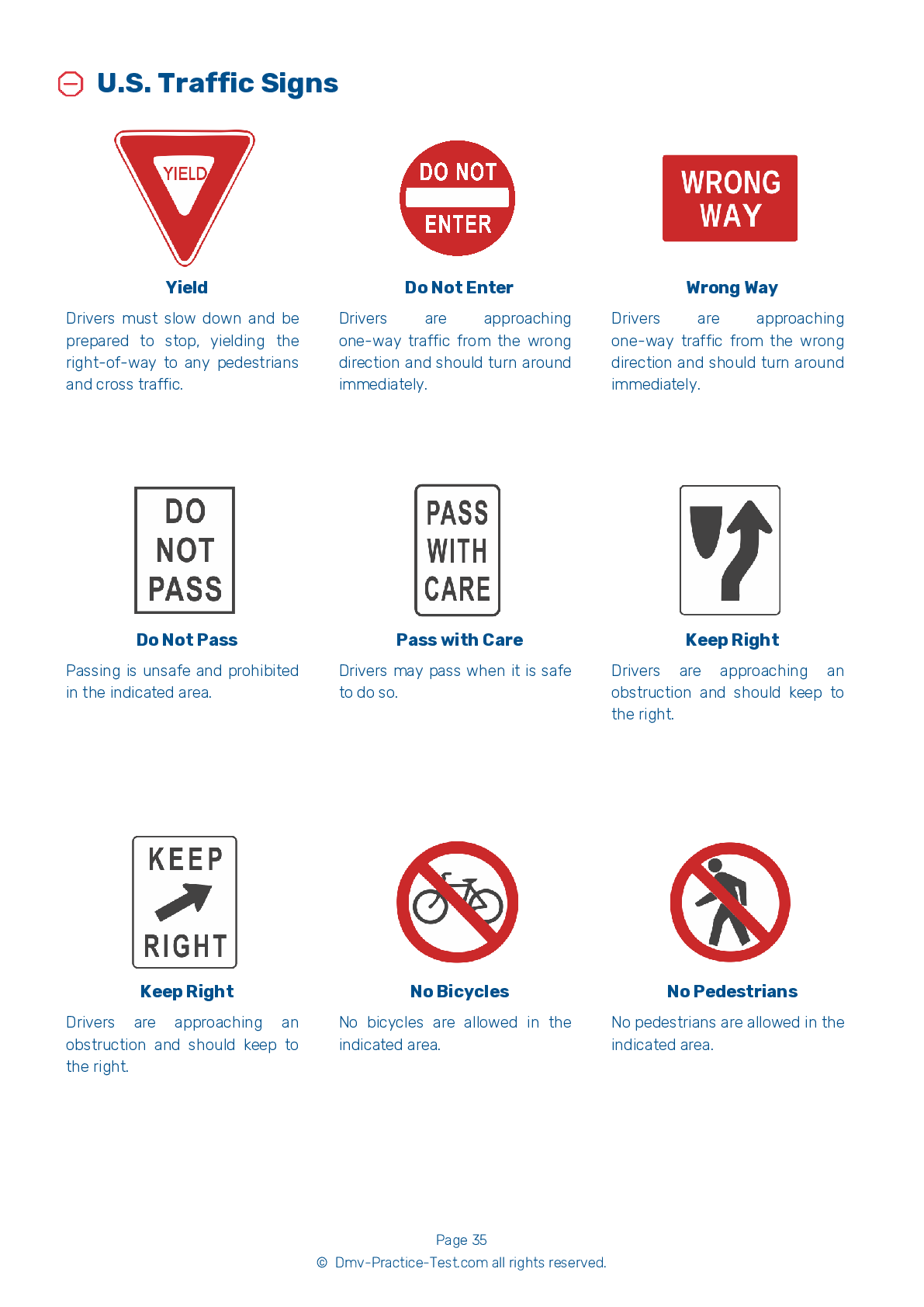FREE Utah DMV Practice Test #24
The practise exams for the Utah DMV have been updated for January 2026. It comprises questions based on the most important traffic signals and laws for 2026 from the Utah Driver Handbook. To study for the DMV driving permit test and driver's licence exam, use actual questions that are very similar (often identical!) to the DMV driving permit test and driver's licence exam.
Each question on the practise exam has a tip and explanation to help you recall the ideas. Questions about traffic rules, traffic signs, and driving statutes, as well as knowledge from the Driver Handbook, will be included in the written portion of the official Utah DMV test.
You must properly answer 20 of the 25 questions to receive a passing mark. Use the Utah Department of Motor Vehicles' practise exam to help you prepare for your instruction permit or driver's licence.
The DMV exam is offered in a variety of languages.
Using any form of testing help will result in an automatic fail, and the DMV may take further action against your driver's licence, so avoid it.
1 . You do not have to stop for a school bus that is stopped with its red lights flashing if it is on a private road.
When a school bus is stopped with its red lights flashing and stop arm out, other drivers are required to stop. This law applies to drivers traveling on both public and private roads.
2 . A yellow light that flashes on and off means:
A flashing yellow traffic light means drivers should slow down and proceed with caution.
3 . What do speed limit signs indicate?
Speed limit signs indicate the maximum or minimum safe speed that is allowed to be driven on a roadway. The maximum limits are for ideal conditions and you must reduce your speed when conditions require it.
4 . Another driver is trying to pass your car. You should:
Keep right when another driver begins to pass you on the left. Check for oncoming traffic and adjust your speed to let the passing vehicle move back into the right lane as easily as possible.
5 . This sign means:

This sign indicates that right turns are prohibited. Do not make a right turn at an intersection where this sign is posted.
6 . A child passenger who is under the age of eight and less than ____ in height is required to be seated in an approved child safety seat while in a moving vehicle.
Utah law requires children who are above the age of four and under the age of eight, and shorter than 57 inches tall, to be seated in an approved child safety seat while in a moving vehicle. They should not be allowed to use a seat belt until the seat belt fits properly.
7 . The most effective safety restraints in a traffic crash are:
Safety belts can double your chance of surviving a crash and more than double your chance of avoiding serious injury. Airbags, when used properly with safety belts, provide additional protection in a front-end crash. You should wear both shoulder and lap belts.
8 . Night driving can be more difficult than driving during the day because:
At night, your field of vision is reduced. To make sure you are able to react to hazards on the roadway, always use appropriate headlights. Drive slowly enough that you are able to stop within the distance that you can see ahead.
See the exact questions that will be on the 2026 Utah DMV exam.
99.2% of people who use the cheat sheet pass the FIRST TIME
LT gives us an insight on how the cheat sheet provided her with all the study questions she needed before taking her test.
Joe initially studied with the handbook and failed his test, he eventually found us online, studied and pass his test the first time around.



